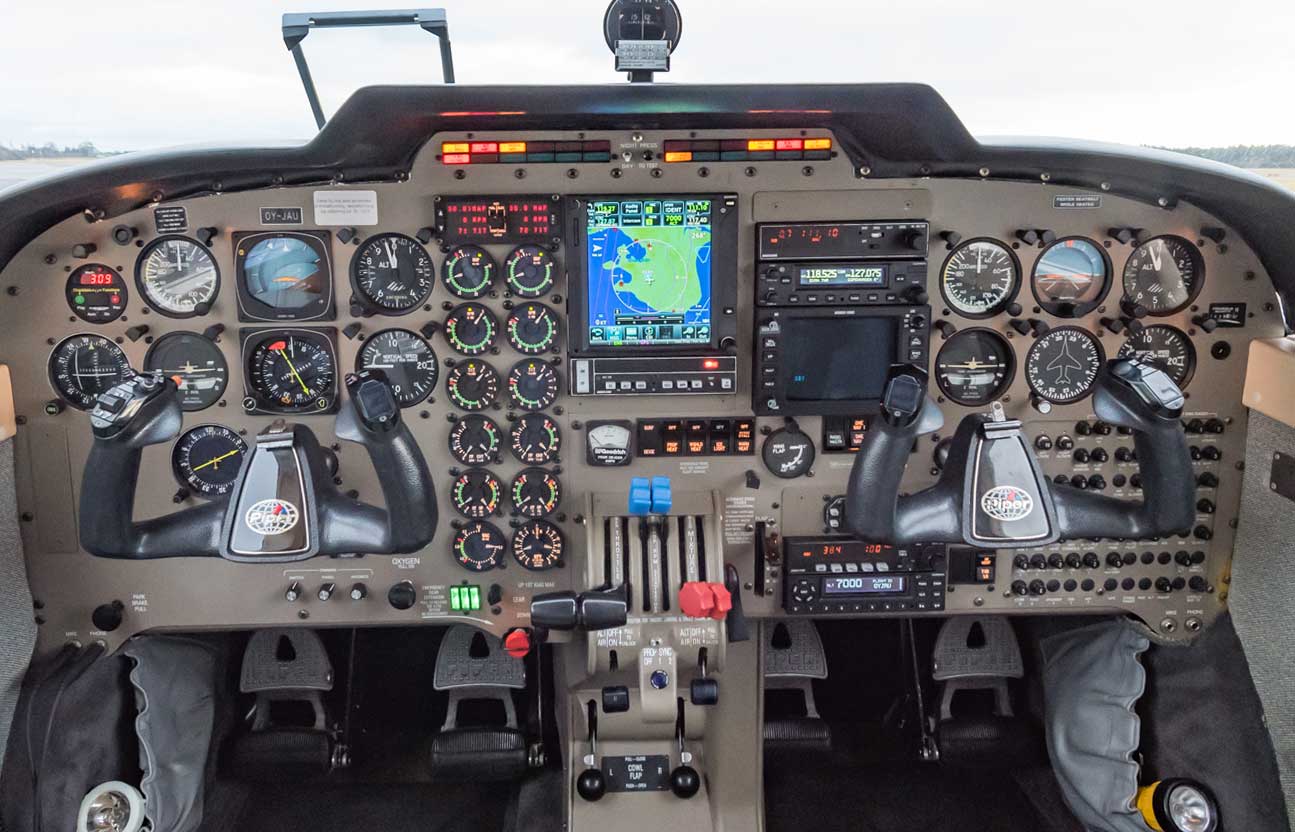The new M700 FURY has received Federal Aviation Administration (FAA) approval for unpaved field operations!
Using engine overhaul downtime for an upgrade
Time to spare
When Claus, the owner of this 1999 Seneca V had to hand in his aircraft for a double engine overhaul, he decided to give the cockpit an upgrade, making it ready for the future requirements of European airspace, by adding a bit of glass to the cockpit and LED lights in the landing gear and wingtips.
Engine overhaul
The Engines on a 1999 Seneca V are the trusted and tested Continental TSIO-360-RB models with 220 HP each. The six cylinder engine has a TBO of 2.000 hrs, and as this aircraft had reached 1950 hrs it was time for the engine overhaul. When you overhaul an engine, you have two options. One, you can have the overhaul done by a local certified maintenance facility, which might improve the AOG time due to less shipping, but the price is normally the same as a factory overhaul.
The second option is to have the engines shipped back to the factory and have the OH done there. The price tag on a factory engine overhaul is 85.000 USD per engine, then on top of that, comes the cost of shipping and installation. The timeline for an engine OH at the factory is minimum 8 weeks so there is plenty of time to get some additional upgrades done on an aircraft.
An Avionics upgrade
The Avionics upgrade was not only an upgrade to improve appearance and making it more user-friendly, but also a part of making the aircraft ready for the future airspace requirements. What was missing? First of all the aircraft needed two 8,33 kHz radios and the ADS-B Out capability in order to comply with the future requirements. Several units were replaced in order to comply and in in order to get full utilisation of the new equipment.
The GTN 750 combines the GMA35 Audiopanel and the GTX 345 Transponder into a single unit. Having these functions in one place makes it very easy and intuitive to operate. The GTN 750 has touchscreen, moving map and allows you to fly WAAS/SBAS LPV approaches down to 200 foot minimums while displaying charts, weather and much more. Furthermore, the GTN 750 complies with the equipment requirements for P-RNAV and B-RNAV/RNAV-5 operations, which is becoming more and more used in the large European airports, such as Schiphol where it is a requirement. The last item that was replaced was the GNC 255A Com/NAV, adding the second 8,33 kHz radio.
All in all, 45,000 USD was used on new avionics, plus the extra costs for installation.
Images of the cockpit before and after
Use the little scroll line left / right


Cockpit Before:
KLN 90B GPS
TRIGG Transponder Mode S
PS Engineering Audio panel 6000,
Dual KX 155 A-101 NAV-COM-glideslope
KCS 55HSI
KI 204 VOR/GS/LOC
KN 62A DME
KR 87ADF
AR-850 Altitude Reporter
KFC – 150 AP/FD
KAS-297B Altitude Preselect w/ enc. altimeter
RDR 2000 VP radar
Cockpit After:
GTN 750 Touchscreen GPS/COM/NAV
GTX 345 Transponder
Garmin GMA35 Audiopanel
GNC 255A Com/NAV
KCS 55HSI
KI 204 VOR/GS/LOC
KN 62A DME
KR 87ADF
Garmin Altitude Encoder GAE12
KFC – 150 AP/FD
KAS-297B Altitude Preselect w/ enc. Altimeter
RDR 2000 VP radar
Lighting up the Runway
While the Avionics was the main priority there was also time to give the aircraft a visual edge, so the owner decided to give the wingtips and landing lights a second century LED installation. The LED lights never need to be replaced and the light is much stronger than normal light sources.
If you have doubts about the future airspace regulations, we have written an article a while back, you can read it here.
And you can read more about the Seneca V, since we have it for sale here.




